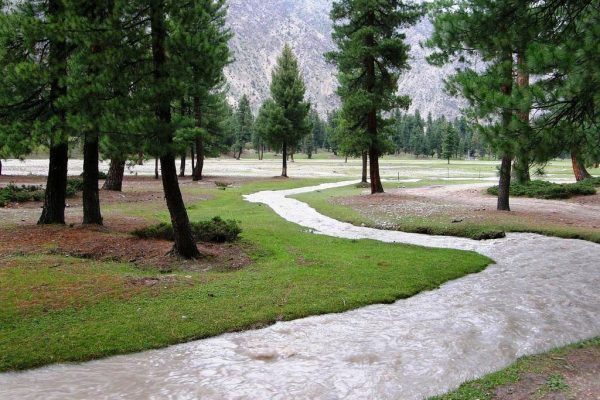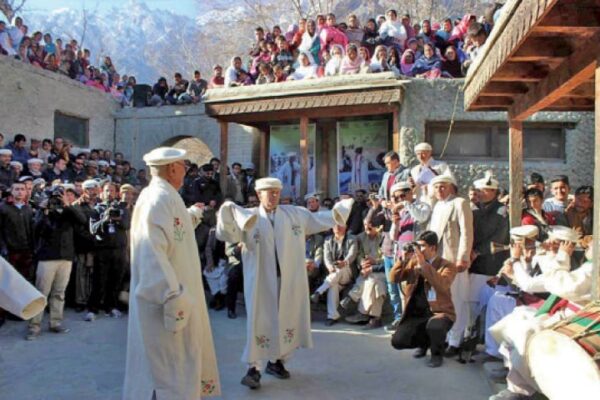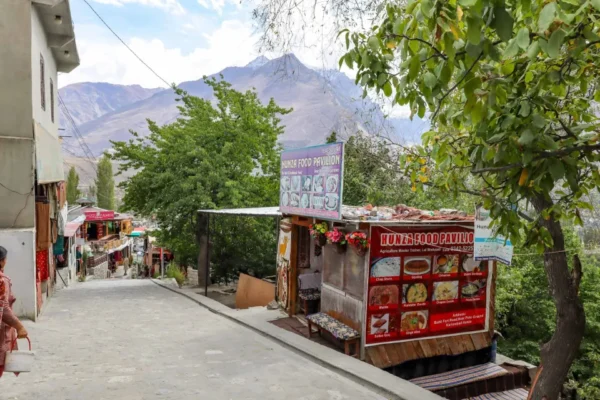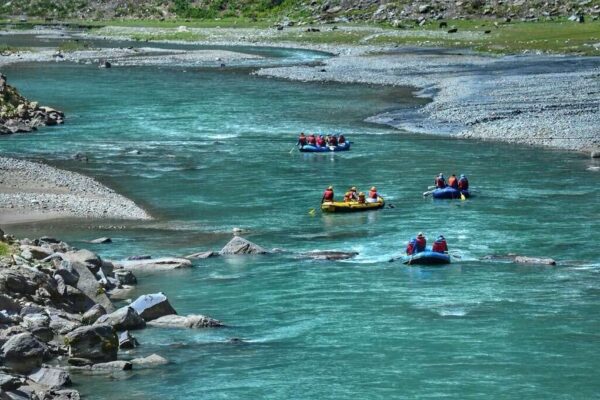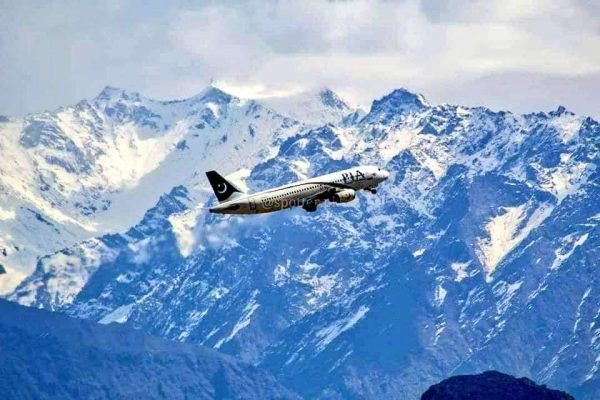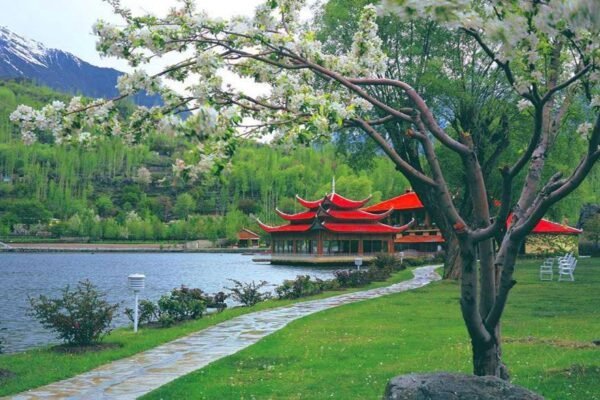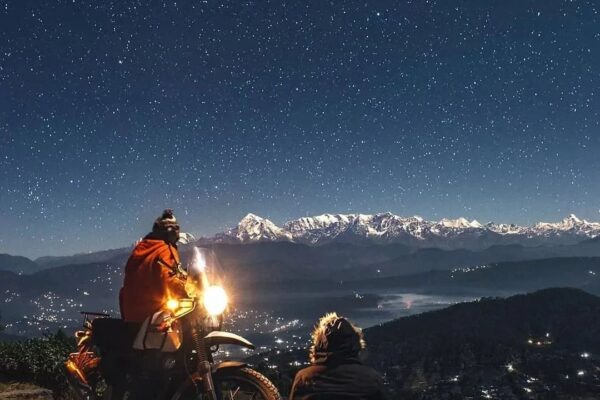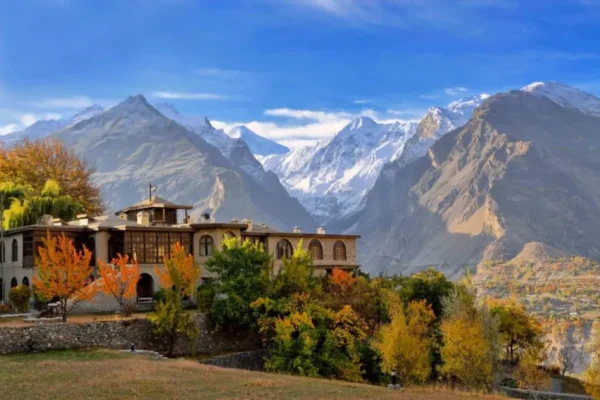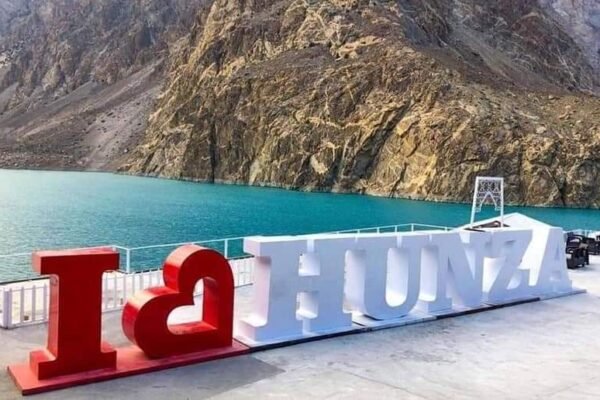Hunza Tour Packages 2025–2026 from Lahore, Islamabad & Karachi
Hunza Valley has undoubtedly emerged as one of the most sought-after tourist destinations, not only in Pakistan but across the globe. Renowned for its breathtaking natural wonders and centuries-old history, Hunza captivates travelers with its majestic landscapes, rich culture, and warm hospitality. Recognizing the immense significance of this paradise on earth and after extensive on-ground research and meticulous planning, we are thrilled to introduce our exclusive Hunza Tour Packages for 2025 as part of our broader Pakistan Tour Package
Best Hunza Valley Tours | By Road & By Air | Family, Couple, Group & Honeymoon Packages
Expirence the breathtaking beauty of Hunza Valley, one of Pakistan’s most iconic travel destinations. Pak Tours Services offers affordable, luxury, private, family, couple, honeymoon, and group Hunza tour packages starting from Lahore, Islamabad, and Karachi.Whether you want a 5-day quick getaway, a 5–7-10 day vacation, or a customized private tour, our Hunza packages include comfortable transport, top-rated hotels, scenic spots, and an experienced driver/guide.
Why Choose Our Hunza Tour Packages?
✔ Direct departures from Lahore, Islamabad, Karachi
✔ Private, family, honeymoon & group packages
✔ Clean hotels in Karimabad, Attabad & Gulmit
✔ Luxury options with Serena, Hard Rock, Luxus
✔ Experienced drivers trained for mountain routes
✔ Flexible itineraries — customize your trip
Hunza Tour Packages Price 2025–2026
Hunza Customized Tour Packages ” refers to customizable travel packages for visiting Hunza Valley, Pakistan, in the year 2025. As professional tour operators, we offer options that you can modify to suit your preferences. You can select from a predefined list of packages or create a bespoke tour that meets your specific needs and expectations.
Hunza Package Price from Lahore / Islamabad (By Road)
| Duration |
Vehicle |
Hotel Category |
Price (Per Couple) |
| 5 Days |
Private Car |
Standard |
Rs 45,000 – 75,000 |
| 6 Days |
Private Car |
Standard/Deluxe |
Rs 55,000 – 95,000 |
| 7 Days |
Private Car |
Standard/Luxury |
Rs 65,000 – 125,000 |
| 8 Days |
Private Car |
Standard/Luxury |
Rs 85,000 – 165,000 |
Group packages start from Rs 22,000 per person (Islamabad departure).
Hunza Tour Packages from Karachi (By Air + Road)
| Package Type |
Details |
Price (Per Person) |
| Karachi → Islamabad → Hunza (10 Days) |
Flight + Private Car |
Rs 85,000 – 130,000 |
| Karachi → Gilgit Direct Flight (Premium) |
Includes Airport Pickup |
Rs 110,000 – 165,000 |
| Karachi Group Hunza Tours (Economy) |
By Air + Shared Transport |
Rs 58,000 – 95,000 |
Hunza Honeymoon Packages
Perfect for newly married couples:
✔ Best hotels: Luxus Hunza, Serena, Hard Rock
✔ Candlelight dinner options
✔ Private car with full privacy
✔ Scenic photography stops
Price range: Rs 85,000 – 175,000 (depending on nights & hotels)
Hunza Family Tour Packages
Best for vacations & school holidays.
Hunza Group Tour Packages
Group price: Rs 22,000 – 48,000 per person
Best Time to Visit Hunza
| Season |
Weather |
Highlights |
| April – June |
Spring |
Blossom season |
| July – October |
Summer/Autumn |
Peak tourism & autumn colors |
| December – March |
Winter |
Snowfall in upper Hunza |
Hunza Tour Package Inclusions
-
Hotel stay with breakfast
-
Private/special transport
-
Fuel & toll taxes
-
Driver with mountain experience
-
Visit to all major attractions
-
Complimentary photography stops
Exclusions
Hunza Winter Snowfall Packages
3 to 5 days starting from Rs 45,000 (couple).
Notable Seasons in Hunza Valley:
The two most renowned seasons for visiting Hunza Valley are as follows:
Cherry Blossom in Hunza: The Cherry Blossom season heralds the arrival of spring in Hunza. The valley transforms into a mesmerizing landscape as the tree gardens burst into bloom, showcasing an array of pink, white, red, and purple flowers in place of foliage. This enchanting display occurs during March and April. Participating in the cherry Blossom Hunza Tour is a delightful experience for oneself or a cherished companion.
Autumn in Hunza: Autumn in Hunza Valley is undeniably the most picturesque and captivating season, where each leaf resembles a stunning flower, adorned in countless shades of fall. The Hunza Autumn Tour in 2025 is an opportunity not to be overlooked..
Best Time to Visit Hunza Valley
Determining the best time to visit Hunza Valley hinges on personal preferences, as the region exhibits a diverse climate throughout the year:
- Spring (March to May): Spring ushers in cherry blossoms and a vibrant display of flora, making it a picturesque time for photographers and nature enthusiasts
- Summer (June to September): Offers pleasant weather with cool breezes in the evenings, ideal for trekking and exploring the natural beauty of Hunza. The tourist season peaks during these months, providing an opportunity to immerse in the local culture
- Autumn (October to November): Known for its golden hues and mild temperatures, autumn in Hunza is perfect for those seeking serene landscapes and clear skies
- Winter (December to February): While winter sports and traditional festivals are highlights, the cold weather and snow can limit accessibility to certain areas
Hunza Weather
Hunza experiences predominantly cold weather with significant snowfall during winters, but the climate is pleasantly mild during summers. There is pretty much variety in the weather and you’ll experience the mild to harsh weather during your Hunza tour. While winter travel to Hunza can present some challenges, those who enjoy snow will be captivated by the breathtaking scenery. Conversely, summers in Hunza offer a delightful, expansive landscape, allowing visitors to freely explore and partake in various excursions. So whatever your preference of weather is, a trip to Hunzais definitely going to charm you in one way or the other.
Hunza Gilgit Baltistan Tour Packages from the USA, Europe, Asia, and Beyond – Exceptional Offers
In recent years, Pakistan has emerged as a premier holiday destination. Tourists from across the globe are drawn to the stunning landscapes of the North and the vibrant culture of the South. We have welcomed thousands of visitors from countries such as the USA, Brazil, the UK, Thailand, Vietnam, South Africa, Malaysia, South Korea, and the Middle East. The awe-inspiring beauty of these valleys captivates foreign travelers, prompting local providers to offer luxurious services to esteemed guests.
It is widely recognized that a tour packages Hunza originating from Islamabad is the most sought-after option among all northern tour packages available in Pakistan. Therefore, we present exceptional offers for customized trips in this region. Join us in discovering the splendor of Pakistan through our extensive selection of Northern Areas of Pakistan Tour Packages.
In 2025, you can take advantage of discounted rates while enjoying all our standard services. For couples, we offer a convenient 4-day Hunza Valley tour package, ideal for weekend getaways. For those seeking a more comprehensive experience, we recommend a 5-day trip to Hunza, which is particularly suitable for groups and families. This 7-day Hunza Valley tour package allows you to explore significant areas of the valley with the guidance of our knowledgeable tour guide and driver.
Additionally, we have organized a 10-day Hunza tour at highly competitive rates for couples, families, and groups. Notably, air travel for Hunza tours is gaining popularity, as it significantly reduces travel time, allowing travelers to spend more time immersing themselves in the beauty of this enchanting valley.
Most Popular Destinations and Attractions to Visit in Hunza Valley
Some famous tourist places to visit in Hunza are:
Hunza Valley
Hunza Valley is located in the Gilgit Baltistan province of Pakistan. Hunza is one of the 14 districts of GB neighboring Ghizer, Shigar, and Nagar districts. Hunza is blessed with some sky-kissing heavenly mountains, beautiful lakes, rivers, glaciers, rich history, adventure spots, and amazing people. Hunza Valley shares international borders with China through Khunjerab Pass and Afghanistan through Irshad Pass in Lugpar Valley. The history of Hunza possibly dates back to the era of Alexander the Great, but there are no clear pieces of evidence. Some also relate Hunza to the Huns or Mangols.
Karakoram Highway (KKH)
Karakoram Highway (KKH) was built by the governments of Pakistan and China to represent good relations between the two countries. It is around 1300 km long in Pakistan and crosses through the Punjab, Khyber Pakhtunkhwa, and Gilgit Baltistan in Pakistan and enters China at Khunjerab Pass on the Pak-China border. This highway is also known as National Highway 35 (or N-35) and becomes China National Highway 314 as it enters China. It is a part of the project of China Pakistan Economic Corridor CPEC. It is considered to be the 8th wonder of the world. KKH is a complete package for nature lovers. It offers glimpses of mountains, lakes, rivers, glaciers, cities, villages, agricultural life, and much more.
Altit Fort
Altit Fort is built on a gigantic rock in the old town of Altit in Hunza Valley for the Rulers of Hunza (Mirs) Valley. It is a nearly 1100-year-old fort, one of the oldest structures in Gilgit Baltistan. Mirs of Hunza initially lived in the Altit Fort for almost three centuries. Later, they moved to the newly constructed Baltit Fort. Altit Town has been the residence of people from Central Asia, China, and the surrounding areas in different eras. It is believed that Alexander The Great came here with his soldiers back in time. This fort was donated to the Baltistan Heritage Trust by the Mirs, and the trust restored it to its current state with the help of the Agha Khan Trust. It is now open to tourists. Guides are there to give a complete tour of the fort and a brief idea of its history and the region. A small cafe at the foothills of Altit Fort serves traditional food and is run by local women of Hunza Valley known as the Kha Basi Café.
Baltit Fort
Baltit Fort is an almost 700-800-year-old fort in the Karimabad Village of Hunza Valley. It is a three-story building structure that resembles the Tibetan construction style. This fort became the residence of Mirs Hunza after they left the Altit Fort. It was built at a higher location as a watchtower over the Silk Route to control trade and protect the kingdom from predators or attacks. Baltit Fort gives an amazing view of Hunza Valley and the surrounding mountains. The Mir of Hunza left the old fort in 1945 and donated it to the Baltit Heritage Trust. A new residence was built downhill from Karimabad. The fort began to fall apart due to negligence. Later, with the help of the Agha Khan Trust, these forts were restored to their original state. Now, it is well preserved and open for tourists to visit. Baltit Fort is included in the UNESCO World Heritage sites.
Attabad Lake
Attabad Lake is a 21 km long glacial lake formed in 2010 due to an earthquake in the area. The quake triggered a massive landslide from the nearby mountains. It was like an entire mountain fell on the villages, killing around 20 people and affecting thousands. This landslide blocked the flow of the Hunza River for over five months, which took the form of a dam submerging towns like Attabad, Shishkat, Ayeenabad, Gulkin, and Gulmit, forming the Attabad Lake. This newly formed lake blocked a massive chunk of Karakoram Highway, putting people’s lives on halt in the upper parts of Hunza. People started using boats temporarily for mobility on the immersed part of KKH. But this momentary solution couldn’t continue for longer. This part of the road was rebuilt, which created a wave of possibilities for the local people of Hunza, and Attabad Lake emerged as one of the most famous tourist destinations worldwide.
Khunjerab Pass
Khunjerab Pass is a mountain pass located on the Karakoram Highway. This pass is at the border between Pakistan and China in the Gilgit Baltistan province of Pakistan. It is the highest-paved international crossing at an elevation of 4693 meters. It is also the highest point on KKH. Khunjerab Pass also has the highest ATM in the world. It connects Cina’s Xinjiang province with Gilgit Baltistan. This border is used for trade, travel, and tourism purposes. Being at a high elevation, it receives a significant amount of snowfall, making it inaccessible during winter. Khunjerab Pass is included in the Khunjerab National Park. This National Park starts from Sost Town and goes to the border. During summer, if you are lucky enough, you can witness wild Yaks, Himalayan Markhor, and Ibex.
Hussaini Suspension Bridge
Hussaini Suspension Bridge has been used to connect Hussaini Village in Hunza Valley with the Karakoram Highway for centuries. It crosses over the Hunza River. This bridge is almost 500 feet long, spreading over the river like a long, thin rope. This bridge is famous for its perilous pathway, as the gaps between each plank of wood used to put our feet on are too much that it almost gives mini heart attacks while crossing it. This bridge was recently renovated, but the gap between the bridge’s planks of wood is still the same. If you are an adventure tourist, you must visit this once in a lifetime.
Eagle’s Nest Duiker
Duiker is the highest village in Hunza Valley at 10,000 feet above sea level. It offers an aerial panoramic view of Hunza Valley, Nagar, Rakaposhi Peak, Golden Peak, Ultar Peak, Diran Peak, Lady Finger Peak, and a total of 11 peaks. This place has a rock that naturally resembles an Eagle bird; thus, this point is known as the Eagle’s Nest. It can be accessed using small cars on a 6 km steep metalled road and is around 15 to 20 minutes from Karimabad Village. You can also hike to the top from the Altit Fort. It will take you almost 1-1.5 hours. To get the most out of Eagle’s Nest Point, visit it at sunset or sunrise.
Karimabad Bazar Hunza
Karimabad Bazar Hunza is the gem in Karimabad town of Hunza Valley. It is undoubtedly the best tourist destination in Hunza Valley if you want to meet locals, enjoy their local food, witness their culture through their artifacts, or to buy any souvenirs. In Karimabad Bazaar, the local shops sell antique and handmade artifacts, dry fruits, traditional dresses, shawls, handbags, shoes, and rare and expensive gems. You will also bump into local restaurants serving traditional, desi, and continental food. If you need a detailed guide on the restaurants in Hunza serving local food, visit Must-Visit Cafes & Restaurants in Hunza. You will also meet lovely locals greeting you with their huge smiles. A trip to Hunza is incomplete without a visit to Karimabad Bazar.
FAQ – Hunza Tour Packages
1. How many days are ideal for a Hunza trip?
5–7 days is perfect.
Karachi travelers should consider flying to save time.
2. Do you offer customized itineraries?
Yes — fully customized honeymoon, family & corporate tours.
3. Which is better, Hunza or Skardu?
Hunza for sightseeing & culture.
Skardu for lakes & adventure.
Many travelers combine both in a 7–10 day tour.
4. Are roads safe for families?
Yes — we assign experienced northern drivers.
5. Is Hunza accessible in winter?
Yes, except Khunjerab Pass (which closes).
Where is Hunza Valley located?
Hunza Valley is located in the Gilgit-Baltistan region of northern Pakistan, nestled between the Karakoram and Himalayan mountain ranges.
What is the best time to visit Hunza Valley?
The best time to visit is from April to October when the weather is pleasant, and the valleys are lush and vibrant.
Are there any trekking routes in Hunza Valley?
Yes, popular trekking routes include the Baltit Fort to Ultar Meadow trek, Passu Glacier trek, and the Rakaposhi Base Camp trek.
Are there any historical sites in Hunza?
Yes, Hunza is home to historical sites like Baltit Fort, Altit Fort, and ancient villages such as Ganish.
Are there any festivals in Hunza?
Yes, the Navroz Festival (March) and Cherry Blossom Festival (spring) are celebrated with traditional music, dance, and local cuisine.
Is it safe for individuals or females to travel to Hunza?
Yes, Hunza is considered one of the safest regions in Pakistan for both individuals and female travelers.
How do I get to Hunza Valley?
You can reach Hunza by road from Islamabad (14-16 hours) or by flying to Gilgit (1-hour flight) and then driving to Hunza.
What kind of food is available in Hunza Valley?
Local cuisine includes Chapshuro, Hunza Pie, Diram Fitti, and fresh fruits like apricots and apples.
What are the languages spoken in Hunza Valley?
The primary languages are Burushaski, Wakhi, and Shina, but Urdu and English are also widely understood.
Can I use my credit card or ATM?
Credit cards are rarely accepted, and ATMs are limited. It’s advisable to carry cash (Pakistani Rupees).
Is a cellular/mobile network available in Hunza Valley?
Yes, but the network can be weak in remote areas. Jazz, Telenor, and SCOM are the main providers.
What is the climate like in Hunza Valley?
Hunza has a temperate climate with cold winters (November-February) and mild summers (April-October).
Can I go rock climbing or mountaineering in Hunza Valley?
Yes, Hunza offers opportunities for rock climbing and mountaineering, especially around Passu and Rakaposhi.
What kind of accommodation is available in Hunza Valley?
Options range from luxury hotels and boutique resorts to guesthouses and budget-friendly hostels.
Is Hunza Valley suitable for families?
Yes, Hunza is family-friendly with safe environments, scenic spots, and activities for all age groups.
What are the must-visit places in Hunza Valley?
Must-visit spots include Attabad Lake, Baltit Fort, Passu Cones, Eagle’s Nest, and Khunjerab Pass.
Do I need a permit to visit Hunza Valley?
No special permit is required for Hunza, but you may need one for areas like Khunjerab Pass (Pak-China border).
What should I pack for a trip to Hunza Valley?
Pack warm clothing, comfortable shoes, sunscreen, a first-aid kit, and a camera to capture the stunning views.
Is there internet access in Hunza Valley?
Yes, but internet connectivity can be slow and unreliable in remote areas.
Can I visit Hunza Valley in winter?
Yes, but roads may be blocked due to snow. Winter offers a unique, serene experience with snow-covered landscapes
